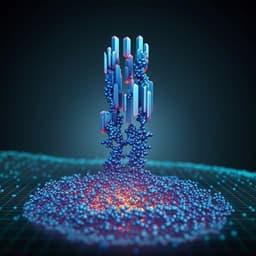
Engineering and Technology
Graph neural networks for an accurate and interpretable prediction of the properties of polycrystalline materials
M. Dai, M. F. Demirel, et al.
This innovative research by Minyi Dai, Mehmet F. Demirel, Yingyu Liang, and Jia-Mian Hu introduces a groundbreaking graph neural network model that predicts the properties of polycrystalline materials with remarkable accuracy. Leveraging the magnetostriction of Tb0.3Dy0.7Fe2 alloys, this model provides insights into the physical interactions among grains and highlights the significance of each grain's features.
~3 min • Beginner • English
Related Publications
Explore these studies to deepen your understanding of the subject.







